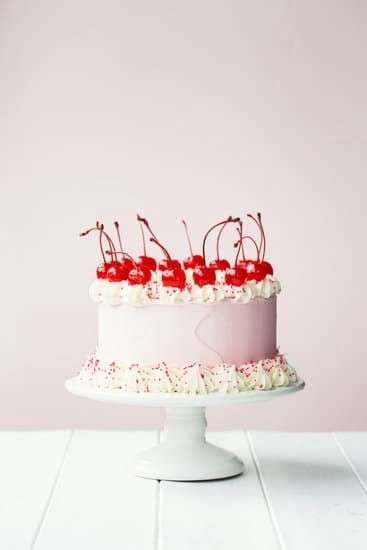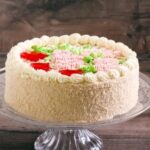When it comes to decorating cakes, the possibilities are endless. From vibrant icing designs to intricate fondant creations, bakers have a wide range of tools at their disposal to make their cakes truly unique. One tool that is often overlooked but can create stunning effects is butcher twine.
With its versatility and unique characteristics, butcher twine has been gaining popularity in the world of cake decoration. In this article, we will explore why butcher twine is the perfect choice for enhancing the presentation of cakes.
Butcher twine offers a level of creativity that other cake decorating materials simply cannot match. Its ability to be manipulated and formed into various shapes and patterns allows bakers to create intricate designs with ease. Whether it’s creating delicate bows or weaving together strands for a mesmerizing lattice effect, butcher twine opens up a whole new realm of design possibilities for cake decorators.
In recent years, there has been a growing trend in using butcher twine as a decorative element on cakes. From rustic-themed weddings to whimsical birthday parties, more and more people are incorporating this versatile material into their cake designs.
Butcher twine adds an organic and natural touch to cakes that can’t be replicated by synthetic ribbons or other materials. It creates an aesthetic appeal that resonates with those seeking a more rustic or bohemian look for their special occasions.
Not only does butcher twine offer creative beauty, but it also works well with different types of cake textures and frostings. Unlike some delicate decorations that can melt under certain conditions or become too heavy for softer cakes, butcher twine holds its shape while adding texture and dimension without compromising the integrity of the cake itself. This makes it suitable for use on everything from light sponge cakes to dense chocolate masterpieces.
As we delve further into this article, we will discover the benefits of using butcher twine compared to other materials, explore different types and colors of butcher twine for cake decoration, and learn essential techniques for working with this remarkable material. Join us as we unravel the possibilities of creating visually stunning cake designs with the help of butcher twine.
The Benefits of Using Butcher Twine for Cake Decoration
Butcher twine is not only versatile and unique, but it also offers a plethora of benefits when it comes to decorating cakes. Unlike other cake decorating materials, butcher twine provides several advantages that make it the perfect choice for adding intricate and creative designs to your cakes.
One of the major benefits of using butcher twine is its ability to allow for creative freedom. With its flexible and customizable nature, you can create various patterns and designs on your cakes. Whether you want to create a simple bow or a complex woven pattern, butcher twine offers endless possibilities for expressing your artistic vision.
Another advantage of using butcher twine for cake decoration is its compatibility with different types of cake textures and frostings. Whether you are working with a smooth buttercream frosting or a textured fondant surface, butcher twine adheres well and adds an interesting texture to the overall presentation of the cake. This versatility makes it ideal for any type of occasion or theme.
When incorporating butcher twine into your cake decoration, it’s important to select the right type and color that complements your design. Butcher twine comes in various materials such as natural cotton, jute, or synthetic fibers, each offering a distinct look and feel.
Additionally, there are different colors available that can enhance the visual impact of your cake decoration. By carefully choosing the right type and color of butcher twine, you can create unique effects on your cake decorations that perfectly match the theme or occasion.
Different Types and Colors of Butcher Twine for Cake Decoration
When it comes to cake decoration, choosing the right butcher twine can make all the difference in enhancing the overall presentation. Butcher twine offers a wide range of options in terms of material and color, allowing for endless creativity and customization. Whether you’re looking for a rustic touch or a vibrant pop of color, there is a type and color of butcher twine to suit every theme or occasion.
Variety of Butcher Twine Options
Butcher twine comes in various materials such as cotton, jute, or hemp, each with its own unique characteristics. Cotton butcher twine is soft and gentle, making it ideal for delicate cake decorations. Jute twine has a slightly rougher texture, adding a rustic and natural element to your cakes. Hemp twine is durable and strong, perfect for creating intricate designs that require more support.
In addition to different materials, butcher twine also comes in a plethora of colors. From classic neutrals like white, beige, and brown to bold hues like red, blue, and green, there is a color for every style and preference. Experimenting with different colors can elevate your cake decorations by adding visual interest and contrast.
Creating Unique Effects with Butcher Twine
The type and color of butcher twine you choose can greatly impact the final look of your cake decorations. For example, using natural-colored jute twine on a naked or semi-naked cake can create an earthy and rustic vibe. On the other hand, bright-colored cotton twine wrapped around buttercream frosting can add a playful touch to birthday cakes.
A popular trend in cake decoration is incorporating metallic or glitter butcher twines into designs for more glamorous occasions like weddings or anniversaries. These shiny options bring elegance and sophistication to any cake creation.
Selecting the Perfect Butcher Twine
When selecting butcher twine for cake decoration, it’s crucial to consider the theme or occasion and the overall design of the cake. For a minimalist cake with a clean aesthetic, opt for neutral-colored twines that blend seamlessly with the frosting. If you’re aiming for a more bold and vibrant look, choose twines in contrasting or complementary colors that will make the decorations pop.
It’s also important to ensure that the butcher twine is food-safe and doesn’t contain any harmful dyes or chemicals. Look for twines specifically labeled as suitable for culinary use to guarantee they are safe to come into contact with your cakes.
By selecting the right type and color of butcher twine, you can elevate your cake decorations and create visually stunning treats that are sure to impress. Don’t be afraid to experiment with different combinations and techniques – unleash your creativity and let the versatility of butcher twine enhance your cake designs.
Essential Tools and Techniques for Working with Butcher Twine
Butcher twine is not only a versatile and unique material for cake decoration, but it also offers a wide range of benefits when compared to other decorating materials. One of the major advantages of using butcher twine is its ability to allow for creative and intricate designs. The flexibility and strength of the twine make it easy to manipulate into various shapes and patterns, allowing decorators to create stunning designs on their cakes.
To work with butcher twine effectively, there are a few essential tools and techniques that can be used. One important tool is a pair of sharp scissors or kitchen shears, which will be needed to cut the twine to the desired length. Additionally, it is recommended to have a ruler or measuring tape on hand in order to ensure precise measurements.
When attaching and securing the butcher twine onto the cake, one common technique is to use toothpicks or skewers as anchors. Simply insert toothpicks or small wooden skewers into the cake where you want the twine to start or end, leaving enough space between each anchor point for the twine to pass through. Once the anchors are in place, gently wrap or tie the twine around them, creating your desired design.
For achieving professional-looking results with butcher twine cake decorations, it is important to pay attention to detail and take your time during the process. Working with clean hands will prevent grease or dirt from transferring onto the twine and potentially affecting its appearance. Additionally, being patient while wrapping or tying the twine will ensure even spacing and neatness in your design.
Overall, working with butcher twine requires a few essential tools along with some simple techniques that can help achieve beautiful results when decorating cakes. By having these tools on hand and practicing proper techniques, decorators can unleash their creativity and create visually stunning cake designs using this versatile material.
| Essential Tools | Techniques |
|---|---|
| Sharp scissors or kitchen shears | Cutting the twine to the desired length |
| Ruler or measuring tape | Ensuring precise measurements |
| Toothpicks or skewers | Using as anchors for securing the twine onto the cake |
Creative Ideas and Inspiration for Butcher Twine Cake Decorations
Butcher twine offers endless creative possibilities for cake decorations. Its versatility makes it a popular choice among professional bakers and cake enthusiasts alike. By incorporating butcher twine into your cake designs, you can add unique flair and sophistication to any occasion. In this section, we will showcase a range of visually appealing cake designs that incorporate butcher twine, providing detailed explanations of how to recreate each design.
Rustic Charm
One popular way to use butcher twine in cake decoration is to create a rustic charm. This style is perfect for outdoor or country-themed weddings or events. Start by wrapping the base of a tiered cake with a thick strand of natural-colored butcher twine, securing it with edible glue as you go. For an added touch, tie small bows along the circumference of the cakes using thinner strands of contrasting colored butcher twine.
Nautical Vibes
For those looking to achieve a nautical theme, incorporating butcher twine is a great option. Starting with a plain white frosted cake, create horizontal lines around the edges using navy blue or red-colored butcher twine. Attach the twine securely using toothpicks inserted into the sides of the cake. To elevate the design further, consider adding icing seashells or miniature sailboat decorations on top.
Elegant Elegance
Butcher twine can also be used to create elegant and sophisticated designs on cakes. One idea is to wrap thin metallic silver or gold-colored butcher twine around each tier of a wedding cake to give it an opulent look. Pair this with sugar flowers or pearl accents for an added touch of elegance.
Texture and Dimension
Using thick strands of brightly colored butcher twines on smaller cakes can add texture and dimension to the overall design. Start by tightly wrapping the twine around a small cake, making sure it overlaps in multiple directions. Experiment with different colors to create a vibrant and visually interesting look.
Remember, these are just a few of the countless creative ideas you can explore when using butcher twine for cake decorations. Don’t be afraid to experiment and let your imagination run wild. With the right combination of colors, textures, and techniques, you can create visually stunning cakes that are sure to impress any audience.
Tips for Handling and Storing Butcher Twine for Longevity
Butcher twine can be a valuable asset in cake decoration projects, but it is important to handle and store it properly to ensure its longevity. By taking the right steps to care for your butcher twine, you can maximize its lifespan and continue to use it for future cake decorating endeavors.
To begin with, it is essential to clean your butcher twine after each use. This can easily be done by washing it with mild soap and warm water. Gently rub the soap into the twine and rinse thoroughly to remove any residue or food particles. Allow the twine to air dry completely before storing it.
When it comes to storing your butcher twine, there are a few options to consider. One popular method is using a plastic or glass container with a lid. Simply place the twine inside the container and secure the lid tightly. This will protect the twine from dust, dirt, and any potential damage.
Another option is using a spool or bobbin to wind your butcher twine around. This not only keeps the twine organized but also prevents tangling and fraying. Choose a spool or bobbin that fits the length of your twine comfortably and wind it neatly in place.
Additionally, make sure to store your butcher twine in a cool, dry place away from direct sunlight. Excessive exposure to heat or moisture can weaken the fibers of the twine, leading to reduced durability.
By following these tips for handling and storing your butcher twine, you can maintain its quality over time and continue using it for many cake decoration projects in the future. Remember that proper care and maintenance are crucial for preserving its longevity.
Unique Examples of Butcher Twine Cake Decorations for Special Occasions
When it comes to decorating cakes for special occasions, butcher twine offers a unique and unexpected element that can truly elevate the design. Whether it’s a birthday, wedding, or anniversary celebration, incorporating butcher twine into your cake decorations can add a touch of elegance or whimsy that will surely impress your guests.
One creative idea for using butcher twine in cake decorations is to create intricate and delicate patterns on the sides of the cake. Using different colors of twine, you can weave and wrap the twine around the cake layers to create eye-catching designs. For example, for a rustic-themed wedding cake, you could wrap beige-colored butcher twine around each layer in a crisscross pattern to mimic the look of burlap.
Another way to utilize butcher twine for special occasions is by creating unique cake toppers or accents. For instance, for a baby shower cake, you could use pink or blue twine to create small bows or booties that can be placed on top of the cake. This adds a charming and personalized touch that perfectly suits the occasion.
Butcher twine can also be used as a finishing touch when presenting smaller treats like cupcakes or cookies for special events. Simply tying a colorful piece of twine around each individually wrapped treat not only secures the packaging but also adds an adorable and festive touch.
Conclusion
In conclusion, using butcher twine for cake decoration offers a unique and versatile way to enhance the presentation of your cakes. Throughout this article, we have explored the benefits of using butcher twine over other cake decorating materials, the different types and colors available, essential tools and techniques for working with it, as well as creative ideas and inspiration for incorporating it into your designs.
By choosing butcher twine, you are not only able to create intricate and eye-catching cake decorations, but you also have the freedom to experiment with various designs and techniques. The compatibility of butcher twine with different types of cake textures and frostings allows you to unleash your creativity and produce professional-looking results. Whether you’re aiming for an elegant or whimsical look, there is a wide range of options for you to explore.
To ensure the longevity of your butcher twine, it is important to handle it with care and store it properly after use. Proper cleaning and storage methods will prevent tangling or fraying, allowing you to continue using it in future projects. Additionally, purchasing high-quality butcher twine from reputable sources will ensure that you have access to the best materials for achieving stunning results.
Frequently Asked Questions
Can you put twine on a cake?
Yes, it is possible to put twine on a cake. Twine can be used as a decorative element for cakes, particularly for rustic or vintage-themed designs. It adds a unique touch and can be wrapped around the base of a cake or even used to tie together layers.
However, it’s important to ensure that the twine is clean and food-safe before using it on a cake. Placing a barrier, such as parchment paper or plastic wrap, between the twine and the cake is also recommended.
Is kitchen twine the same as regular twine?
Kitchen twine and regular twine are not exactly the same, although they are similar in nature. Kitchen twine, also known as cooking twine or butcher’s twine, is specifically designed for culinary purposes. It is typically made from natural fibers like cotton and has been treated to withstand high temperatures.
This makes it safe for use in cooking processes like trussing meats or securing stuffed ingredients while roasting or grilling. Regular twine may not have undergone such treatments and might not be suitable for direct contact with food.
What can you use Bakers twine for?
Bakers twine is a versatile tool commonly used in baking applications. It is typically made from cotton and comes in various colors and thicknesses. Bakers twine can serve several purposes in baking projects, such as tying together pastry boxes to secure treats or gifts, creating lovely bows on gift tags or favor bags, or even wrapping around baking molds to help release delicate cakes more easily without damaging their shape.
Its colorful appearance adds a charming aesthetic to baked goods, making them suitable for events like birthdays, showers, or holidays. Bakers twine is also great for bundling herb sprigs or kitchen utensils together when making bouquet garni or gift sets for fellow bakers and chefs alike.

Welcome to our cake decorating blog! My name is Destiny Flores, and I am the proud owner of a cake decorating business named Cake Karma. Our mission is to provide delicious, beautiful cakes for all occasions. We specialize in creating custom cakes that are tailored specifically to each customer’s individual needs and tastes.





